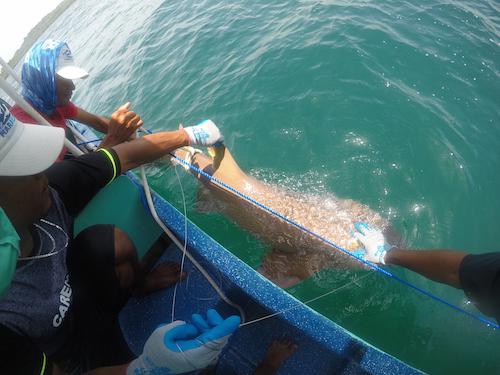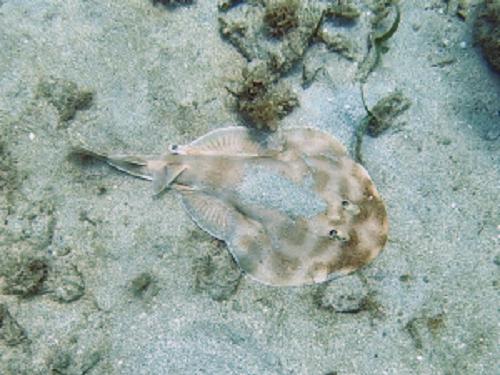Megan Gabriela Chevis
Other projects
21 Apr 2016
Baseline Monitoring of Elasmobranchs in Panama Using Fisheries-Dependent and Independent Methods
For this project we will be continuing the long-term monitoring of large marine wildlife around the Bocas del Toro archipelago, utilizing Baited Remote Underwater Videos (BRUVs) and underwater visual census, as well as using as additional method, scientific longline, to better understand the demographics of the shark and ray populations around the islands. This project will build upon previous years by incorporating our educational program, Niños del Mar, where we will conduct interactive talks with students at primary schools in Bocas to educate on marine megafauna, their threats, and their conservation and inspire curiosity for marine life and their habitats. This year we will also be using surveys targeted at fish markets and restaurants to collect data on local fish consumption. These data will direct the creation of outreach materials and presentations that we will conduct in communities around the islands in order to promote responsible fisheries and seafood consumption.

We use a combination of standardized methods, including Baited Remote Underwater Videos, to assess the big fish populations around the Bocas del Toro archipelago. © Rachel T. Graham.
Marine megafauna (sharks, rays, and large finfish) are iconic wildlife and key indicators of marine ecosystem health. They can also be important contributors to local economies through tourism. Threatened by unsustainable fisheries, many of their populations have decreased dramatically in recent decades. Lack of data on their status, changes in their populations, their use of critical habitats, and whether or not they benefit from protected areas all hinder effective conservation and management efforts. In Panama, notably along its Caribbean coast, there is little quantitative information on fish populations and how they are impacted by fisheries. Lack of understanding by local fishers, managers, and the general public on the vulnerability of big fish to overexploitation and their long-term economic and environmental value also prevents actions that support healthy populations of these species.

A lesser electric ray, Narcine bancroftii, is spotted during an underwater visual census in Bocas del Toro. © Piter Georgett.
This project will be a continuation of a long-term project assessing the diversity, abundance, distribution, and demographics of big fish and marine turtles around the Bocas del Toro archipelago. During the past 3 years our team has collected fisheries-independent data on these megafauna utilizing Baited Remote Underwater Videos (BRUVs) and underwater visual census. Last year we trialled an additional method- scientific longline- that allows us to assess the demographics of shark and ray populations. The overall project will provide an overview of the megafauna populations that inhabit the Bocas archipelago, their distribution in relation to human communities, important tourism sites, and the marine protected area, as well as their possible interactions with fisheries and development that can be used by local managers and stakeholders.
This project will also build the capacities of local fishers and students who will be trained and form the field team to help carry out monitoring and collect data. We will hold presentations at multiple communities in Bocas, reaching sites that we have not previously worked with, to share information about this project, increase understanding of marine megafauna and the need for their conservation, and discern ways that local stakeholders can contribute to conservation and management efforts. School-based interactive presentations with late primary school students (10-14 yrs) will create awareness about the marine diversity around the islands and seek to change negative perceptions that many children have about sharks and rays. We will further address the consumption of species of conservation concern, such as critically endangered goliath grouper, through the use of surveys directed at fish vendors and restaurants and the creation of outreach materials.